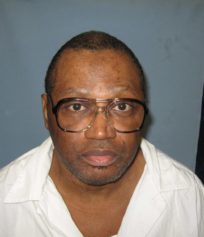There is a long-held belief among communities of African descent that when we invoke or remember our ancestors they, in turn, remember us. It is a profound two-way process that moves far beyond mere recollection to draw upon the root or original sense of the term, re-member, as in to reassemble or make whole. Consistent with the cherished African notion of Sankofa, it holds that to effectively move forward, we must first recapture, learn from and incorporate what has gone before us.
Attorney Bryan Stevenson knows this well. The prominent civil-rights lawyer, bestselling author and director of the Alabama-based Equal Justice Initiative (EJI) has spent the past six years remembering and restoring voice to those victims of racial violence whose lives and brutal deaths many have tried to forget. On April 26, 2018, Stevenson’s Equal Justice Initiative will host the opening of two new historical complexes in Montgomery, the National Memorial for Peace and Justice and the Legacy Museum, devoted to honoring victims of lynching and to reconciling America’s past racial violence in order to forge a better future.
“I think this entire nation needs to commit to understanding our past more clearly,” said Stevenson, contending that “most of the issues we are struggling with today are a function of our failure to understand our history and our past.”
“It is urgent that we confront the fact we are living in a post-genocide society,” stressed Stevenson, referencing the extermination of Native populations by European settlers, the deadly institution of American slavery, and the long history of lynching and racial terror. “For me, this looking back is critical to understanding who we are and how we got here.”
Claiming a solitary hill above the city of Montgomery — adorned by hundreds of six-foot corten-steel monuments representing victims and interspersed with sculptures from African and African-American artists interpreting racial inequality — the National Memorial for Peace and Justice acknowledges an era of racial terror when thousands of African-Americans were lynched and publicly tortured. A few blocks away, at the popular site of a former warehouse and market for enslaved Africans, the Legacy Museum explores slavery, lynching, segregation and mass incarceration in America.
“We want to make the legacy of slavery visible,” said Stevenson, noting “we have a holocaust museum that’s very powerful and effective in this country even though the holocaust didn’t take place here. And this says something about how we have avoided honestly confronting this legacy, so we want to build a museum where you are going to be forced to confront the history of slavery.”
For its part, the monument will make visible the practice of “racial terror lynchings”—horrific acts of violence whose perpetrators were never held accountable — as distinguished from hangings or mob violence that followed criminal trials and racial violence, or hate crimes prosecuted as criminal acts. In collecting the data that inspired the monument, EJI substantiated hundreds more lynchings than the numbers contained in the most commonly accepted research to date. Pulling from existing research, historical archives, local media and court records, and interviewing historians, survivors and descendants, EJI documented 4084 racial terror lynchings in 12 Southern states between the end of Reconstruction in 1877 and 1950, 800 more than previously reported. The organization also accounted for over 300 additional racial terror lynchings in other states during this same period. Mississippi, Georgia, and Louisiana had the highest number of lynchings in the United States.
The research highlights numerous “public spectacle lynchings” or acts of racial domination attended and celebrated by entire white communities, lynchings that escalated into mass violence against entire African-American communities, and the more targeted “lynchings of sharecroppers, ministers, and community leaders who resisted mistreatment.” It reveals that many terror lynchings resulted from “a wildly distorted fear of interracial sex” or an unjustified response to “casual social transgressions” or “allegations of serious violent crime.” It further notes the overwhelming majority of lynchings took place on sites that remain unmarked and unrecognized while “the landscape of the South is cluttered with plaques, statues, and monuments that record, celebrate, and lionize generations of American defenders of white supremacy, including countless leaders of the Confederate war effort and white public officials and private citizens who perpetrated violent crimes against black citizens.”
“The Charlottesville Riot and the national debate about removing Confederate monuments shows us how important public history is,” said Khalil Gibran Muhammad, professor of history, race, and public policy at the Harvard Kennedy School and the Suzanne Young Murray Professor at the Radcliffe Institute for Advanced Studies. As former director of the Schomburg Center for Research in Black Culture in Harlem, N.Y., Muhammad noted that monuments and museums “are sites of collective history-telling and public memory which are foundational to our national sense of identity and collective values.”
These two institutions, continued Muhammad, are “part of a new effort to achieve what Bryan Stevenson calls ‘truth and reparation.’ America can only be a different nation if it tells a different origins story and chooses to face and learn from its past.”
There is much to face. For America’s newly emancipated citizens, Reconstruction was characterized by both great danger and potential. Although no longer in chains, and now legally able to become literate, acquire land and participate in the political process, African-Americans in the vanquished South faced major hostilities kept only partially in check by federal troops more committed to humiliating their former foes than ensuring racial equity.
In the mid-1870s, this precarious relationship, and many of the gains that came with it, would collapse under the weight of a waning federal commitment, unfavorable political compromise, and widespread racial terrorism by the Ku Klux Klan and kindred groups in a reemerging South.
By the turn of the century, with the successive adoption of such inequitable and draconian measures of legal control as “Pig Laws,” Plessy v. Ferguson, and Jim Crow alongside the neo-slavery institutions of sharecropping and convict leasing, a comprehensive system of racial inequality and white supremacy had come into being across the South, one codified by statute, yet enforced by blood.
“The 13th Amendment abolished involuntary servitude and forced labor, but it didn’t address this ideology of white supremacy, this narrative of racial difference,” said Stevenson, noting how “the North won the Civil War, but the South won the narrative war.” This, he said, is “why I argue slavery didn’t end in 1865, it evolved. It turned into decades of terrorism and lynchings, and the violence that African-Americans experienced throughout the 20th century.”
This domestic racial terrorism, stressed Stevenson, would shape the trajectory of American history in numerous and indelible ways including its role in the Great Migration of millions of Southern Black families to the North, the advent of the civil rights movement, the development of our modern system of capital punishment, and the contemporary state-sponsored activities of police brutality and mass incarceration.
“As the politics of lynching shifts in the 1930s and ’40s and the federal government is putting a little more pressure on communities that have tolerated terror lynchings for decades, lynching moves from outside the courthouse to inside the courthouse,” said Stevenson, referencing the long history of “sham trials” and unjust court proceedings where “Black men and women are sentenced to death through execution rather than being executed before trial through lynching.”
After citing a litany of relevant legal rulings aimed at either embedding or remedying this inequitable judicial process, including 1972’s landmark Furman v. Georgia, where the death penalty, for a time, was rendered unconstitutional, Stevenson drove the connection home. “This line can be drawn from the violence that emerges after Reconstruction, that is sustained by lynching, that continues in the ’40s and ’50s, through Furman, to the modern death penalty system.”
Yet, despite this long and violent historical trajectory, there is a dearth of prominent public memorials or monuments dealing with slavery and acknowledging the thousands of African-Americans who were lynched in America. And Stevenson has committed himself and his organization to changing that.
Not everyone wants them to. While Montgomery’s mayor, Todd Strange, has endorsed the dual monument-museum project given the potential tourism dollars involved and its reliance on private funding for construction, others have been less than enthusiastic.
“Why is racially motivated violence worse than any other kind of violence?” asked Republican state senator, Dick Brewbaker, in an August 2016 with The New Yorker. “I don’t give a damn what the motive of the offender was if an act of violence was committed,” offered Brewbaker, whose district covers parts of Montgomery, a city he felt was already adequately represented by several museums on the civil-rights era. “Interjecting even more race talk into Alabama’s politics is not productive.”
Such criticism is consistent with an American stream of thought that prioritizes looking forward and not getting bogged down by the pain, trauma and racial animosity that some feel is best left behind.
“To these folks I’d say many of the museums and the monuments we have had for a long time cause pain and dissension in fueling white supremacy,” offered Muhammad, implicating the country’s ongoing celebration of racist founders, institutions and Confederate memorials while noting that “untold lives have been destroyed.”
“Like a malignant cancer in society, a sick nation can only get healthy if it takes its medicine and consents to a robust treatment of truth and courage,” continued Muhammad. “It will be painful and the odds are long, but living in denial and avoiding the treatment will only ensure the disease metastasizes.”
Stevenson echoed Muhammad while further acknowledging the African concept of Sankofa.
“I am very committed to urging this nation to turn around and look more honestly at the past because I think, if we commit ourselves to truth-telling, we can actually achieve some things we have not been able to achieve to date,” said Stevenson.
“And I do believe in truth and reconciliation, but it’s sequential,” clarified Stevenson. “Truth has to come before we get to reconciliation.”


